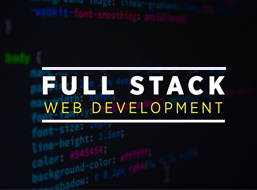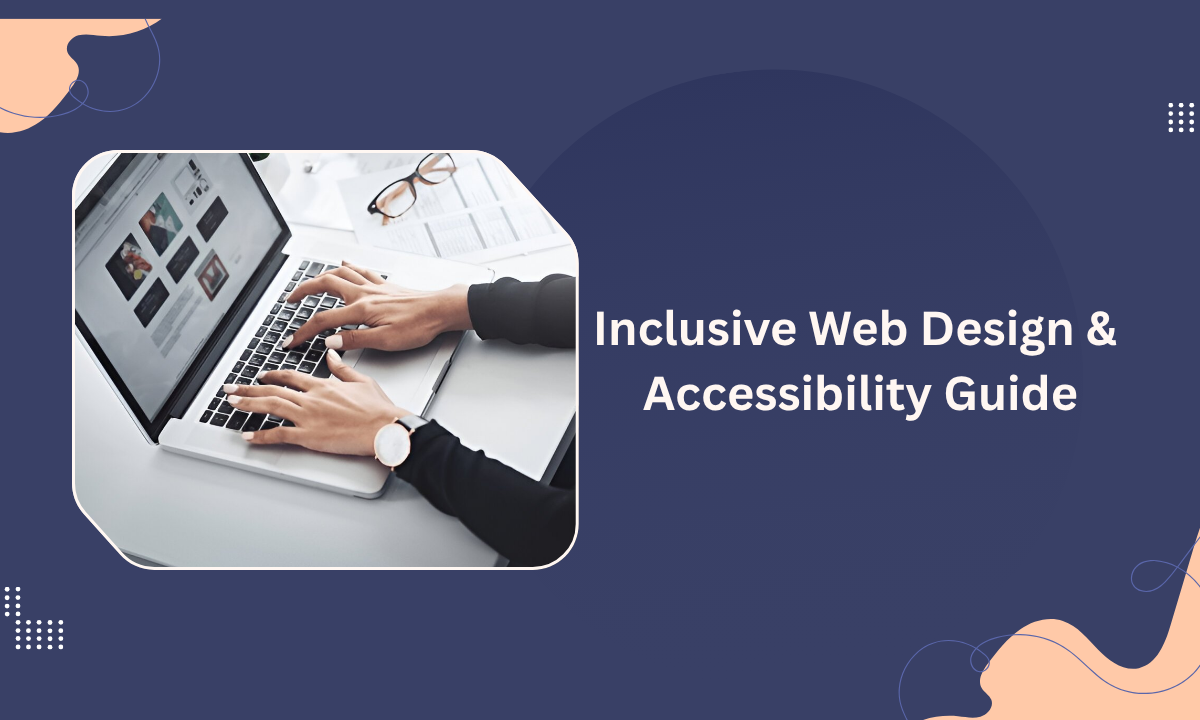Table of contents:
|
1. What is Web Accessibility? |
|
2. Why Web Accessibility Matters |
|
3. Core Web Accessibility Principles |
|
4. Web Accessibility Standards and Guidelines |
|
5. Common Accessibility Issues in Web Design |
|
6. Best Practices for Web Accessibility Design |
|
7. Integrating Accessibility into Your Project Workflow |
|
8. Training and Career Opportunities in Accessibility |
|
9. Conclusion |
|
10. Frequently Asked Questions (FAQs) |
As a trainer at Apponix, I believe in creating digital experiences that work for everyone. In this web accessibility guide, we explore how to build websites with true inclusivity, applying the principles of web accessibility so that your web designing training course in Bangalore or any project you undertake delivers equal access to all users.
What is Web Accessibility?
Web accessibility means that websites, tools and technologies are designed and developed so that people with disabilities can use them. More specifically, people must be able to perceive, understand, navigate and interact with the Web—and contribute to it.
When we build websites, we often focus on visual appeal, brand messaging, animations and so on. But we must never forget that underlying all that is the need for an accessible structure. This is the core of website accessibility.
An accessible website works for users with visual, auditory, cognitive, neurological, physical, speech or situational limitations. Because when we talk about web accessibility design, we are talking about inclusive design—making sure no user is left behind.
Why Web Accessibility Matters
When we invest time in understanding web accessibility, we unlock benefits far beyond compliance or legal requirements.
An accessible website broadens our audience, increases usability for older users, people on mobile devices or with low bandwidth, and improves overall user experience. It drives innovation, reflects well on our brand, and shows that we prioritise equal access.
As I teach in our web designing training course in Bangalore at Apponix, this is also a vital market differentiator: a truly inclusive website often outperforms a site that is only visually attractive.
Core Web Accessibility Principles
In our training, I always emphasise the four key principles that underpin accessibility standards. These form the bedrock of accessible design and development:
-
Perceivable – Information and UI components must be presented in ways users can perceive. If something is invisible or inaudible to someone, it fails this principle.
-
Operable – UI components and navigation must be operable by a wide range of users. For example, keyboard support is essential for users who cannot use a mouse.
-
Understandable – Information and operation of the UI must be understandable: language, structure, navigation must make sense and not confuse.
-
Robust – Content must be robust enough to be interpreted by a wide variety of user agents, including assistive technologies. The site should work across browsers, devices, and future technologies.
These principles form the mnemonic “POUR”, and you’ll find them woven through the international web accessibility standards. Understanding them early helps you to embed accessibility into your design process rather than bolt it on at the end.
Web Accessibility Standards and Guidelines
When we speak of website accessibility, we refer to standards that tell us how to achieve it. The most widely referenced is the Web Content Accessibility Guidelines (WCAG) (versions 2.0, 2.1, 2.2), which organise requirements under the four principles above, with testable success criteria and conformance levels (A, AA, AAA). These standards help designers, developers, content authors and organisations ensure their content is accessible.
In our Web Designing Training Course in Bangalore at Apponix, we cover how to apply WCAG techniques in HTML, CSS, ARIA, multimedia, forms and interactive features. Beyond WCAG, we also touch on other guidelines like Authoring Tool Accessibility Guidelines (ATAG), User Agent Accessibility Guidelines (UAAG) and how they interplay with accessibility.
Adhering to standards is not just about ticking checkboxes—it means your project is built to endure, inclusive by design, and audit-ready for accessibility inspection.
Common Accessibility Issues in Web Design
Even seasoned designers and developers often encounter recurring accessibility issues. In our training, I guide participants to identify and solve these typical problems:
-
Missing alt text for images means screen-reader users miss vital information.
-
Reliance on colour alone to communicate meaning, which fails users with colour-vision deficiencies or in low-contrast contexts.
-
Navigation or functions that require a mouse, excluding keyboard-only users.
-
Poor heading structure or missing landmarks hinder screen-reader navigation.
-
Time-limited interactions (forms, tasks) that don’t account for slower users or those needing assistive tools.
-
Multimedia without captions, transcripts or audio descriptions, leaving out hearing- or sight-impaired users.
-
Complex language, inconsistent layout, and unexpected behaviour (menus, pop-ups) that confuse users with cognitive limitations.
-
Interactive widgets or dynamic content built without semantic markup or ARIA support make them inaccessible to assistive technologies.
When we design, we must anticipate these issues and build checks into our process rather than addressing them after launch. That’s why our web accessibility guide emphasises early planning and continuous testing.
Best Practices for Web Accessibility Design
Here are some actionable steps we cover in the Apponix training to ensure your web accessibility design is strong:
-
Use semantic HTML elements (for example, <header>, <nav>, <main>, <section>) to provide structure and meaning for assistive technologies.
-
Provide meaningful alt attributes for images, and descriptive captions/transcripts for audio and video content.
-
Ensure sufficient contrast between foreground and background colours. Text should be easily readable in different lighting or device conditions.
-
Make all interactive elements keyboard-accessible. Focus order should be logical, visual focus indicators present, and no keyboard traps allowed.
-
Design forms with clear labels, instructions and error suggestions. Avoid relying on colour or placeholder text alone.
-
Use headings appropriately and consistently. Heading structure helps all users, particularly screen-reader users, to understand content hierarchy.
-
Avoid or provide a way to skip content that may trigger seizures or motion-sensitive reactions (such as blinking/flashing content).
-
Ensure responsive design: pages must work across devices (desktop, mobile, tablet) and adapt gracefully to different screen sizes or input methods.
-
Use ARIA roles only when necessary (for example: for dynamic controls), and prefer native HTML when possible. Test with assistive technologies to verify behaviour.
-
Provide users the ability to adjust or customise content (for example: text-size, contrast). Avoid hard-coding strict layouts that prevent flexibility.
In our training institute in Bangalore, we include hands-on labs where participants apply these practices, review common failures, and test using tools such as keyboard-only navigation, screen readers, mobile emulators and colour-contrast analyzers.
Integrating Accessibility into Your Project Workflow
A real web accessibility guide isn’t just theory—it shows how to embed accessibility into every phase of the web project lifecycle. From planning and design through development, testing and maintenance, accessibility must be seen as integral.
-
During requirements gathering, include accessibility criteria: define target audiences, assistive technology constraints, and accessibility goals (such as WCAG level AA).
-
Design phase: create wireframes and designs that incorporate accessibility: contrast, keyboard navigation, and design alternatives.
-
Development: implement semantic markup, ARIA when needed, accessible forms, responsive design, meaningful alt text and captions from day one.
-
Testing: conduct automated checks (contrast, valid HTML), manual tests (keyboard only, screen reader, mobile), user testing with people with disabilities if possible—this catches real-world accessibility issues.
-
Maintenance: ensure that when content changes, accessibility is preserved. New pages, third-party plugins, and updates must be reviewed for accessibility impact.
In our Web Designing Training Course in Bangalore at Apponix, we emphasise that accessibility is not a “one-time fix” but a continuous commitment. Building it in early saves costs, avoids re-work, and fosters an inclusive mindset.
Training and Career Opportunities in Accessibility
If you are pursuing a career in web design, UX, front-end development or digital marketing, learning to apply accessibility and inclusive design gives you a strong edge. A training institute in Bangalore, like Apponix, offers courses that cover web accessibility, responsive design, ARIA, performance, UX for all users and inclusive design workflows.
A training programme that includes accessibility helps you build skills that are increasingly in demand as organisations embrace digital accessibility, inclusive design and compliance. As a trainer at Apponix, I see students gain confidence not only in design aesthetics but also in designing with purpose and inclusivity as mandatory design dimensions.
Conclusion
In my role as trainer at Apponix, I’ve watched many aspiring designers and developers discover a deeper sense of purpose when they embrace web accessibility. It is not just about ticking standards—it is about building for humanity and ensuring that our digital world truly includes everyone.
This web accessibility guide is a roadmap: from understanding what accessibility means, to recognizing common accessibility issues, to applying best practices, and embedding accessibility across your design-development workflow.
Choosing the right training institute in Bangalore and enrolling in a comprehensive web designing training course in Bangalore that covers accessibility is a wise decision. The skills you build will serve not only your career but also many users whose voices are often overlooked. By making accessibility a core part of your design DNA, you deliver better websites, stronger user experiences and meaningful inclusion. I invite you to join us at Apponix, build inclusive digital spaces and be part of the change.
Frequently Asked Questions (FAQs)
Q1: What is the difference between web accessibility and usability?
Web accessibility focuses on enabling people with disabilities (or with diverse abilities) to use the web effectively. Usability focuses on making systems easy to use for everyone. Accessibility is a foundation for usability, but goes further by addressing barriers specific to disabilities.
Q2: What does the term ‘web accessibility design’ encompass?
It means designing user interfaces, content logic, navigation, interactivity and code in a way that respects accessibility principles (perceivable, operable, understandable, robust). It includes inclusive design approaches and adherence to standards.
Q3: Why should a designer in Bangalore care about accessibility standards?
Because the digital market here is vast, there are many users with diverse devices, network constraints, and abilities. Also, many organisations must meet legal or sector-specific accessibility requirements. Knowing accessibility gives you a competitive advantage.
Q4: Can a website that fully meets WCAG standards still have accessibility issues?
Yes. The standards guide us, but real-world testing and an inclusive mindset are critical. Some content, third-party widgets, and dynamic interactions may pass automated checks but fail user-testing. Accessibility needs continuous attention.
Q5: How should I choose a training institute for web accessibility in Bangalore?
Look for a programme that covers semantic HTML, ARIA, keyboard navigation, responsive design, accessibility testing, inclusive design workflow, and provides hands-on projects. At Apponix, we ensure our curriculum includes these, so you get real practice, not just theory.




